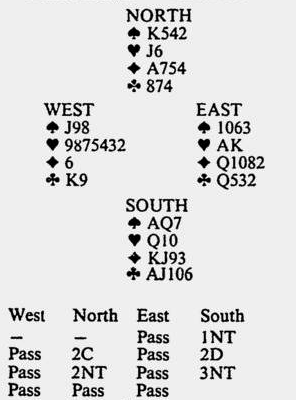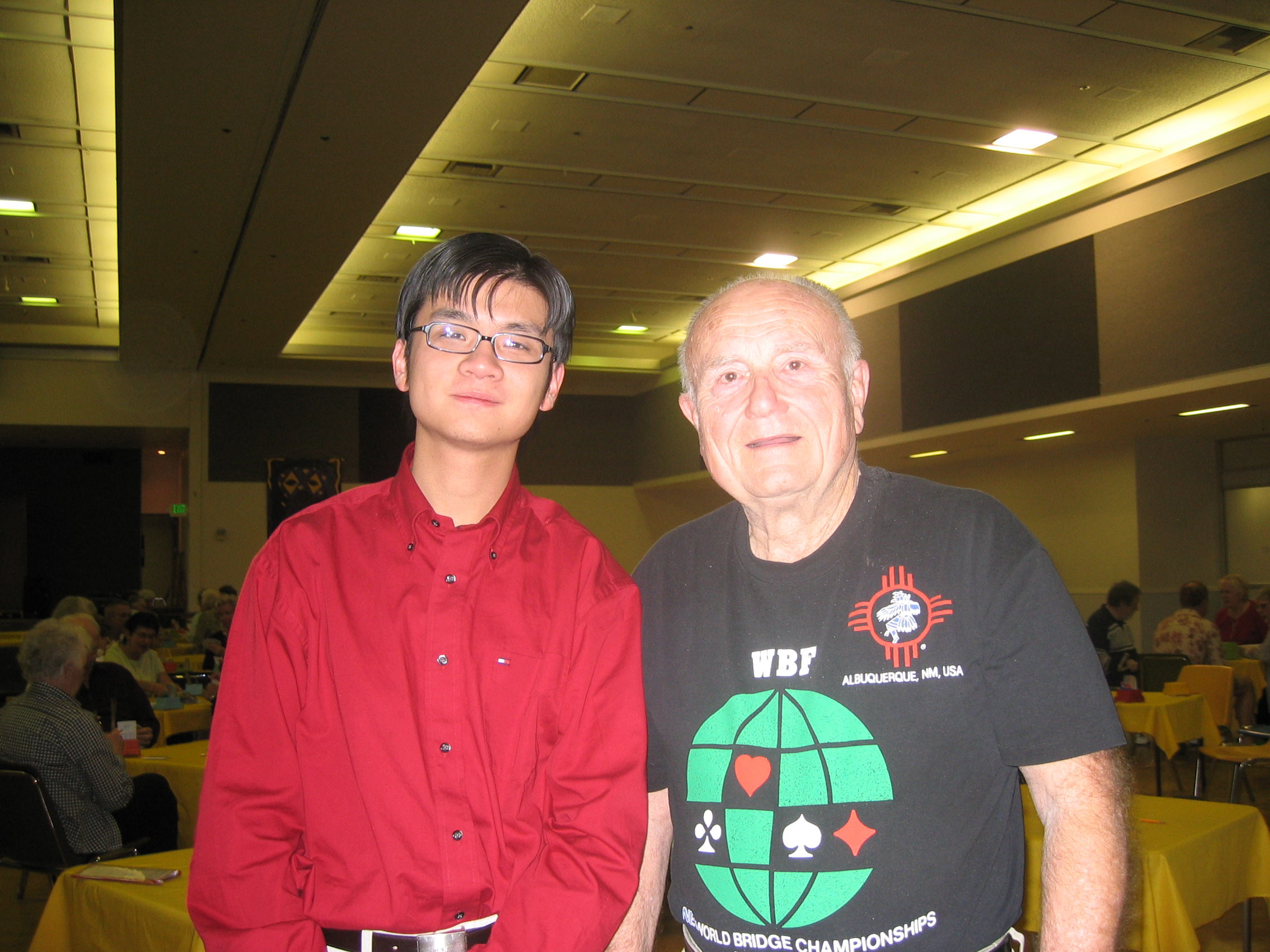The Sydney Morning Herald – Jun 6, 1989
The trouble with bridge is there’s so much to the game. You make the big effort to study and master the basic techniques then spend the rest of your playing life trying to judge when to depart from them. Oh well. Some good comes of it. We keep the psychiatrists in business:
Dealer East; E/W vulnerable.
Opening Lead: ![]() 9
9

The American writer Marshall Miles has discussed some interesting material on the theme that the best way to play a suit in isolation may not be the best way to play a specific hand. Information collectable en route can alter the odds dramatically.
Consider A754 in dummy opposite KJ93 in the closed hand. Being a desperate case, you need four tricks from this suit. The odds are to cash the ace and pull a small one towards the KJ9. If the queen has not shown up, finesse the jack such a suit appears in the diagrammed deal. Proper analysis of the early tricks points to the merit of cashing the ace than finessing the 9 on the second round. «Deep nining» (an expression coined by Edgar Kaplan) is right on this particular occasion for reasons which will become apparent.

East wins the first two tricks with the ![]() A and the
A and the ![]() K, in that order. For a good defender, that shows a doubleton. Your fervent hopes are realized. East switches to the
K, in that order. For a good defender, that shows a doubleton. Your fervent hopes are realized. East switches to the ![]() 2, confirming he is out of hearts (which means West started with seven of them).
2, confirming he is out of hearts (which means West started with seven of them).
By the way, at trick two, West followed suit with the ![]() 2 a suit preference signal asking for the return of the lowest ranking suit, clubs, East has duly obliged. Everything points to West having a club entry, so you need nine tricks in a hurry. Spades just have to be 3-3. You plan your play on that basis. West is known to have seven hearts, needed to have three spades and suspected to have more than one club.
2 a suit preference signal asking for the return of the lowest ranking suit, clubs, East has duly obliged. Everything points to West having a club entry, so you need nine tricks in a hurry. Spades just have to be 3-3. You plan your play on that basis. West is known to have seven hearts, needed to have three spades and suspected to have more than one club.
Therefore you play him for a singleton diamond. For entry reasons, you have to make an early commitment. The correct play is: up with ![]() A; a diamond to the
A; a diamond to the ![]() A; a diamond to the
A; a diamond to the ![]() 9: four rounds of spades; a diamond to the
9: four rounds of spades; a diamond to the ![]() J; cash
J; cash ![]() K; thank you very much.
K; thank you very much.
